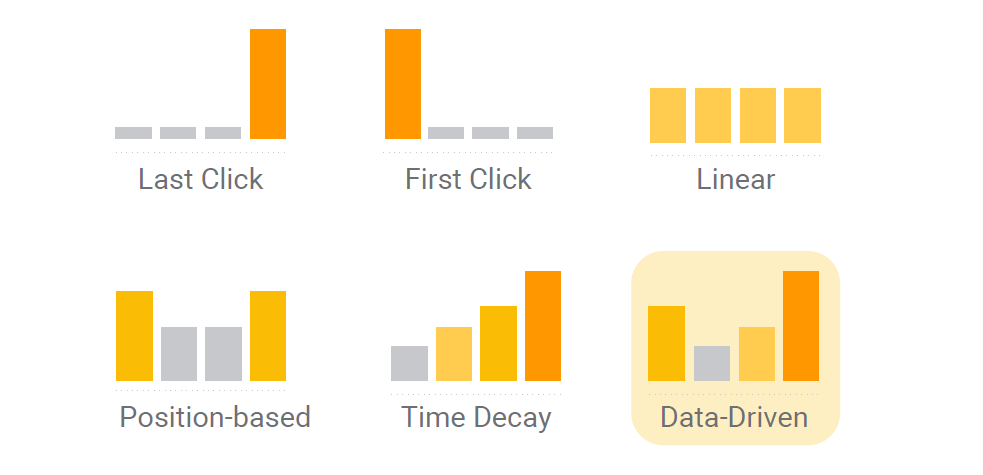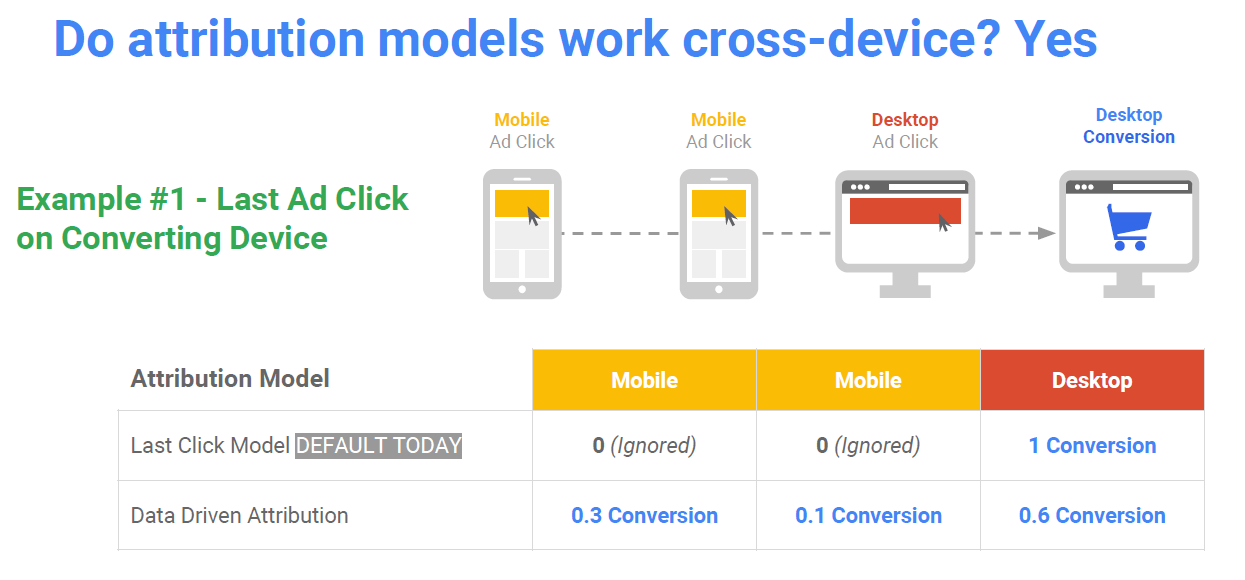22nd September 2017
Attribution Modelling – Moving Away From Last Click Attribution
Following Kate’s blog on “Why Attribution Models are Key to Understanding Your Online Traffic”, Google have released a Data-Driven attribution model, which I will explain below, along with a focus on why it’s important to move away from the Last Click attribution model.
There are many attribution models on offer for AdWords users (shown below).

Historically, “Last Click” attribution modelling has been the preferred attribution model, mainly due to it being selected as standard in AdWords, so if you didn’t know anything about it, you are probably using it.
With an ever-changing search landscape and increasing presence of smart devices in our day to day lives, users no longer merely search and purchase at their desktop computers. A typical user journey is now multi-device, multi-channel and multi-touch, with research, consolidation of information, comparisons and purchases occurring throughout many environments.

Because of the paradigm shift in search, it is becoming essential for us to attribute our conversions correctly. More accurate attribution brings about many benefits, from enabling us to optimise areas we were previously unaware that contributed to conversions, to redistributing budget or introducing further investment into these Campaigns/Ad groups.
Google recommends moving to a Data-Driven attribution approach, although this model is only available to accounts with approximately 15000 clicks and 600 conversions a month. If your account is not eligible for Data-Driven attribution, Google still recommends moving away from Last Click to a static model that distributes conversion value across contributing clicks. Get in touch with us for more information on static models such as Position-Based or Time Decay.
Data-Driven Attribution
On average, searchers click four ads before converting. Last Click attribution ignores three out of the four conversions, giving full attribution to the final click and therefore often not giving a fair or accurate representation of attribution.
The Data-Driven model uses Google’s machine learning technology to “distribute conversions in accordance to the actual value of each click”, where they expect users to experience 5% more conversions at a similar cost per action (CPA).
The example below highlights how each keyword searched impacts a user’s likelihood to convert and how allocating conversion credit can incrementally contribute to conversions:
First Search: “Mens Shoes”
Second Search: “Best running trainers”
Third Search & Conversion: “Nike Free RN Flyknit”

Changing your attribution model to Data-Driven provides an opportunity for all keywords that have contributed across the conversion path, to be “given partial credit” for the conversion.
The next example illustrates how using an attribution model such as Data-Driven can help with tracking the whole user journey, regardless of device and how by continuing to use Last Click, we are missing out on valuable data that can be used to expand and grow our AdWords accounts:


If you’d like to find out more about which attribution model is most appropriate for your business, how to switch your attribution model effectively, or if you need any help with your AdWords account, please do not hesitate to get in touch via phone or email on 01536 316100 or [email protected].






